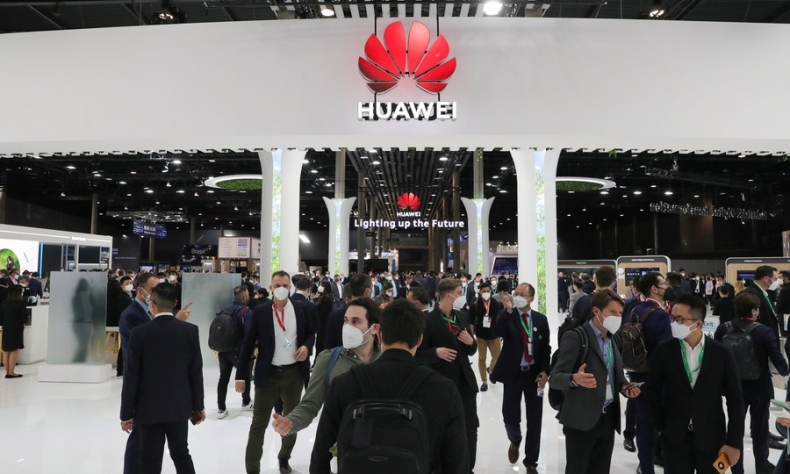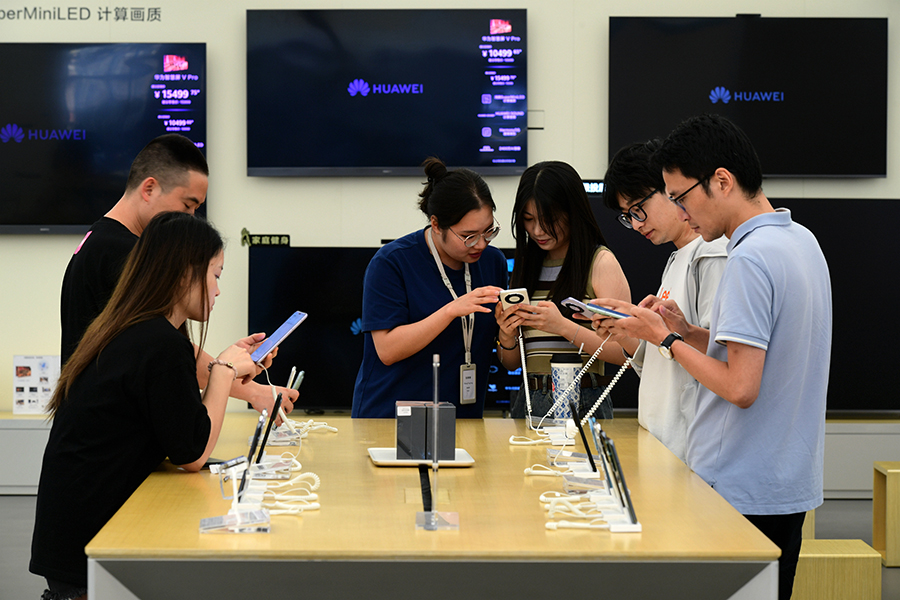Busting Blockades

Perhaps it’s time for Western politicians to ponder this question: If China is already a giant dragon, who is forcing it to keep growing?
Without much ado, not even a press conference, Chinese telecommunications giant Huawei Technologies Co. Ltd. quietly launched the latest model in its flagship Mate Pro smartphone series, namely, the Mate 60 Pro, on August 29. Based on tests conducted on the smartphone, Chinese website AnTuTu Benchmark identified the 5G chip used in the Mate 60 Pro as the Kirin 9000s from Huawei’s chip design unit HiSilicon. The Mate 60 Pro further features download speeds on par with those of Apple’s latest iPhones.
It would further seem Huawei, which has been under United States-imposed sanctions for years, pointedly released the phone during U.S. Secretary of Commerce Gina Raimondo’s visit to Beijing. And global public opinion generally views Huawei’s move as a counterattack against these American sanctions designed to prevent China from making this hi-tech leap.
On May 21, 2019, the U.S. Department of Commerce’s Bureau of Industry and Security added Huawei and 68 of its non-U.S. affiliates to the U.S. “entity list,” a trade restriction list consisting of certain foreign persons, entities or governments, stating, “there is reasonable cause to believe that Huawei Technologies Co. Ltd. has engaged in activities determined to be contrary to the national security or foreign policy interests of the United States.”
The U.S. Government in 2021 also banned American companies from selling advanced chips or providing software support to Huawei. Many believed this would be the company’s death sentence.
In light of the company’s 2022 financial statements, one might say that Huawei saw its darkest hour that year: The year’s global revenue was 642.3 billion yuan ($87.8 billion), while its net profit was 35.6 billion yuan ($4.8 billion), down 68.7 percent year on year.
But despite the mounting pressure, Huawei refused to throw in the towel. Research and development (R&D) had long been a priority for the Chinese giant and following the American sanctions, it continued to increase investment in this area. Annual R&D expenditure in 2021 reached $195.3 billion and in 2022, despite the sharp decline in net profit, Huawei still invested 25.1 percent of its annual revenue of $221 billion in R&D. What’s more, Huawei has filed more patent applications than any other company in China over the past nearly 10 years.

After losing access to advanced chips and technology from outside, China’s top chipmaker Semiconductor Manufacturing International Corp. (SMIC) is believed to have used the “7-nanometer process” to produce the Kirin 9000s chip for Huawei. A nanometer is a measure of chip size, with the fewer the nanometers in the process, the better the chips it will produce.
Although this is equivalent to the processor used by Apple’s iPhone in 2018, with the iPhone 15—slated for release on September 22—set to feature a 4-nanometer processor, it is still an exciting achievement for China. As well as proof that Chinese companies have the strength to form a complete industrial chain in the field of advanced chips.
According to The Washington Post on September 2, Paul Triolo, the technology policy lead at Washington-based business consulting firm Albright Stonebridge Group, called the new Huawei phone “a major blow to all of Huawei’s former technology suppliers, mostly U.S. companies.”
If China continues to achieve breakthroughs in the area of advanced chips, the technological blockade put in place by the U.S. seems to be nothing but a new fallacy.
In fact, over the past few decades, from LCD screens to high-speed trains to jet engines, China has been forced to constantly up its domestic game to get around technological blockades thrown up by the West, and in particular by the U.S.—as the U.S. appears to have a chip-shaped chip on its shoulder when it comes to China.
Perhaps it’s time for Western politicians to ponder this question: If China is already a giant dragon, who is forcing it to keep growing?
 Facebook
Facebook
 Twitter
Twitter
 Linkedin
Linkedin
 Google +
Google +










